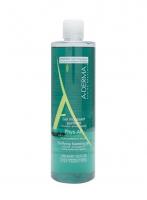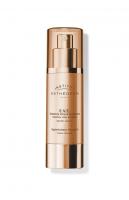The 13 types of nails (and their characteristics)
Already in ancient times, the shape of the nails was an indication of the status or social class of the person. For example, in the Greek and Egyptian civilizations, long nails were synonymous with power. However, the real revolution in the aesthetics of the hands came in the 1960s. It is at this time that the use of acrylic materials for the care and decoration of nails spreads. From this moment on, the manicure market has been growing and developing new techniques and materials that seek to achieve the best quality and the perfect nail design.
Today, nails continue to be an important beauty attribute, so they continue to be cared for just as they once did. In addition, as we have been saying, there is an increasing offer of products, materials and techniques that allow us to achieve the design of beautiful nails.
Many times, When someone begins to be interested in the care of their nails, they usually come across a very extensive offer of options. This can be quite complicated and can lead to choosing an alternative that does not suit the desired result or your own needs. In addition, in some cases the use of certain types of nails requires maintenance care that, if not followed due to ignorance, can cause damage or problems in the nails.
Therefore, in this article we are going to review what types of nails exist, their respective characteristics, as well as their advantages and disadvantages. This way, you can really choose the type of nails you are looking for.
What nail styles can I have?
As we have already commented, the broad market for nails started with the discovery of acrylic materials. However, since then much has evolved in this regard and new techniques and materials have been applied to design nails.
Generally, among the most common materials used in current manicures we find acrylic, gel and fiberglass. In addition to the type of component used, nail types can also be differentiated depending on the placement strategy used. Added to the type of material or treatment that is given to the manicure, we can also distinguish different types of nails according to their shape. Let's see all of them below.
1. Types of nails according to material or technique
In this classification we will see the types of existing false nails that can be found according to the material or technique used for their design.
1.1. Acrylic nails
This type of nails is one of the most common. To make them, acrylic powders and a liquid substance are used, which allows these to be activated when they are mixed. It is important that the person who performs this technique is professionalas it must be run quickly as this substance dries quickly at room temperature.
Unlike other methods such as gel use, you do not need to use special drying lamps. Among the advantages of acrylic nails, it is worth highlighting their low cost compared to other types, their long duration over time and their easy availability in any beauty salon. However, they also have drawbacks such as the difficulty of the technique, which means that it must be applied by a professional.
Acrylic nails too can damage the nail and cause fungus if not applied correctly and, in addition, their placement can be unpleasant due to the use of volatile chemicals that release an annoying odor.
1.2. Gel nails
Gels are materials that have a consistency similar to that of conventional enamels. Generally, the system consists of applying a base gel layer, a color gel layer and finally a protective surface layer. Unlike acrylic nails, gel nails do require the use of ultraviolet (UV) light to achieve the necessary drying.
In this case, the advantages that we can find compared to other types of nails are the less use of volatile chemicals and the more natural and aesthetic finish. Regarding the drawbacks, they highlight its shorter duration, the need to be exposed to rays with a detrimental effect on health, and the use of chemicals such as acetone to be able to remove them.
1.3. Porcelain nails
Although in this case we have dedicated a specific category for porcelain nails, these can be considered a type of acrylic nails, since they use substances similar to acrylics. However, there are important differences between the two types of nails. For example, porcelain nails they are much more delicate and difficult to maintain over time.
Among the advantages that porcelain nails offer are their economic price and the ease of finding them. Among the disadvantages, the exhaustive care required for its maintenance and its shorter duration stand out.
2. Types of nails according to shape
Now that we have discussed the most common types of false nails according to the material and technique used, we are going to review the types of nails according to their shape.
2.1. Oval
This type of nail is one of the most popular. Giving your nails an oval shape will help keep your nails appear narrower and longer. In addition, you will also prevent these from breaking or splitting.
2.2. Almond
This type of nail is oval and elongated at the same time, ending in a sharp way without adopting a pointed shape. If your fingers are thick and you want to give them a thinner appearance, with this shape you will achieve it. Almond nails are a good idea if you like to experiment with your manicure and try out bold designs, as they will give you more play.
23. Dancer
This type of nail characterized by tapering towards the tip, only that its termination has a rectangular shape and not pointed. Like the almond nail, this type is usually very popular among lovers of flashy and elaborate manicures, since it allows to opt for more complex and risky designs.
2.4. Stiletto
Stiletto-shaped nails are undoubtedly only suitable for the most risky. This type of manicure is characterized by ending in a very sharp tip. These types of designs are very showy and striking, although they are not among the most practical.
If you do not usually wear this shape of nail, it is possible that at first you find it strange to do your daily tasks and you need time to adjust to them. Also, this design is not recommended if your nails are weak or brittle, so it is only appropriate to opt for them if your natural nails are strong enough.
2.5. Rectangular or square
Rectangular or square nails are the easiest to get. To design your manicure this way You will only have to have a pair of scissors, a file or nail clippers within reach. However, it is recommended to slightly refine the corners of the square nails, as otherwise not only will not they will have an aesthetic appearance but will be more likely to split, hook or become incarnated and infected.
2.6. Squoval
This shape was designed precisely to eliminate the problems associated with totally square nails. If you want a natural manicure and do not identify with round nails, this is your way.
2.7. Round
Round nails are those that most closely resemble the natural shape of nails. It is one of the simplest and most classic styles, although it is always recommended that the nails be short in these cases, since otherwise breakage may occur.
2.8. Beak
This type of shape is the one with the sharpest point. It can be worn in both a short and long version, although in both cases it must have a very marked finish.
2.9. Edge
Edge design nails have an elongated shape, with an equilateral triangle termination. It is undoubtedly one of the most atypical nails of all that we have discussed.
2.10. Lipstick
Lipstick nails are those whose shape is reminiscent of a lipstick worn by use.
False Nail Considerations
If you are thinking of resorting to false nails of any of the types that we have discussed, it is important that you keep some questions in mind before doing your manicure. False nails adhere to the surface of your nail, preventing it from breathing. This creates an environment conducive to the appearance of fungi and other infections, so proper hygiene and prior disinfection are essential.
Before applying false nails, the natural nail must be filed. However, this filing should never be deep or aggressive, as this can cause serious damage to your nails by exposing them to chemicals in an eroded state. If your nails have a tendency to break or soften, it is important that you make sure to strengthen them before resorting to false nails. You must find the cause of this problem, as sometimes this can be due to a lack of an essential nutrient and may require dietary changes or supplements of some kind.
False nails always require maintenance care. Nails are part of our body and therefore continue to grow even if products have been applied on top of them. For this reason, they should always be periodically cared for to keep them in proper condition. It is important that no less than a month elapse between one application and another, as this can be very aggressive for your natural nails, especially if they are weakened.


